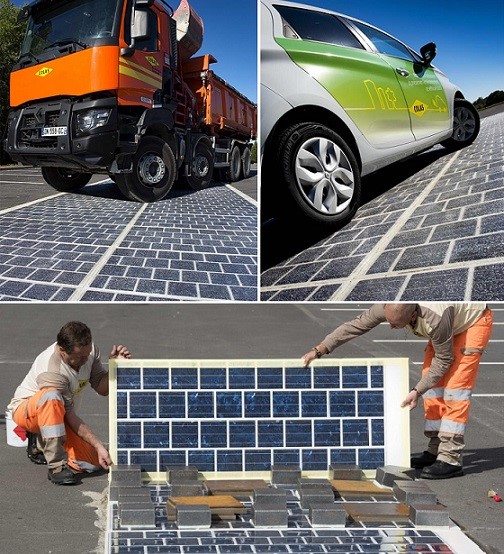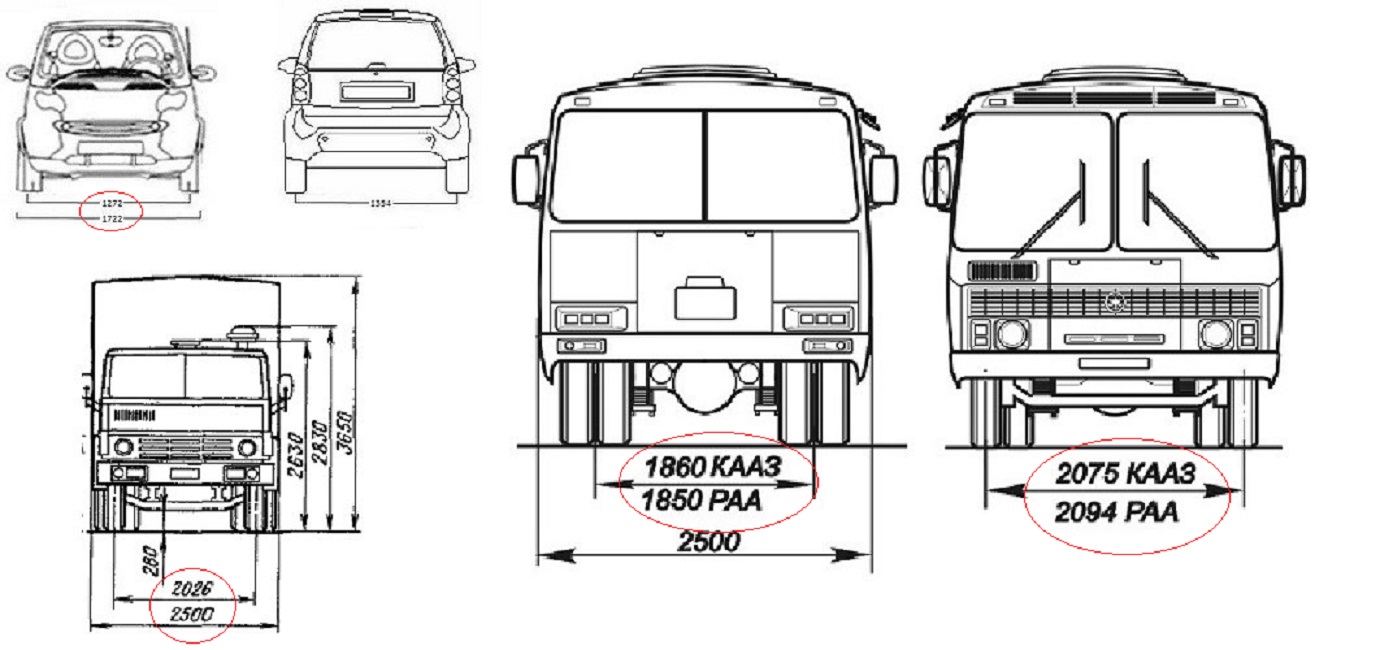Solar panels and asphalt roads. Symbiosis of technology

According to some estimates, about 0.2–0.5 percent of the world’s land surface is covered by roads. And this ratio should increase by 60% by 2050, and for ecology this is clearly not beneficial. Solar panels also take up a lot of space, and accordingly, if you combine the two technologies, you can solve the problems of ecology and energy, saving the earth.
"Solar roads" is exactly the solution from the category two in one, which is designed to solve many problems of the technologies of the "new century" (technological order). Hybrid solutions in this case quite fall under the general trend of symbiosis of technology.
')
This idea with a different degree of efficiency was implemented in the USA, Europe, China ...
In the US - Solar Roadways.

Solar Roadways used modular solar panels covered with tempered glass. Scott and Julie Bryuce launched this project several years ago with the goal of turning ordinary asphalt roads into energy generating traffic arteries.
In 2016, the first public installation of these panels took place in the hometown of Bryusl - Sandpoint, Idaho.
In Europe - Wattway (France).

The one kilometer road to Turuvres-per-Persh was created thanks to the Colas Group. It is covered with 2880 photo panels and generates a sufficient amount of energy for the work of street lamps in the village where 3,400 people live.
In China, a one-kilometer road in the city of Jinan, developed by the Qilu Transportation Development Group.

The road covering consists of three layers: insulating, solar panels and transparent concrete on the surface.
The standard problems of such projects are widely known.
- Energy production compared with conventional solar power is almost half as bad.
- Wearing protective glass increases the risk of damage to the solar panel.
- There is a risk of theft of a part of the solar road (a case has been recorded in China).
But in general, technology 2 in the first can still be useful. One has only to take into account the inevitable shortcomings, and minimize their impact.
Surprisingly, all the "sunny roads" are similar in one thing - they occupy the entire width of the road. Such an arrangement essentially means that the protective coating will wear unevenly along its entire length. The American project of the hexagonal “paving stones” in this sense is much better than the others, since the entire section does not suffer along the width of the road, but still this deficiency cannot be completely corrected.
Traffic on roads is often in the mode of movement on a constant track. Only motorcycles and tricycles can move, disrupting the usual tendency (which is why they suffer the most during the winter season, since the track for normal transport is better cleared of snow than the entire road).
What does this give us? First of all, there is an understanding that there are sections of the road that almost never experience a load from passing wheels, and, therefore, if you place solar panels there, their durability will be much higher.
There are still areas on the road that are occupied by “markup”, which is also ideally suited for the role of solar batteries (especially since then the durability of this type of road signs will be much better to follow).

As can be seen from the comparison, from Smart to KAMAZ and PAZ, the track has certain limits, which help to understand which sections of the road in theory might not be subjected to the pressure of the wheels at all during driving.
The limits to the growth of "sunny stripes" on the road are limited to the track of trucks and buses, since it is this type of transport that creates the greatest pressure on the surface and the wear of the canvas.
The disadvantages of such a “striped” arrangement of the panels on the road will be insignificant in the case of using the autopilot, which will be coordinated with the road to always move along the asphalt track. It is also worth considering that for maximum safety, the resistance and other characteristics of the asphalt web should not differ significantly from the “sun”, so that when maneuvering and braking-accelerating the wheels, there is no unwinding moment of great force (by analogy with the wheel on ice and ground single axis).
At high values of the differences of coverage, it would be more reasonable to use the “solar canvas” on the road limitedly, and in width not exceeding the width of the narrowest wheel of the car.
Energy from road solar panels can be used for various purposes.
- heating the canvas in the winter, and “cooling” by pumping water through the same pipes in the summer. This way it will be possible to solve problems with hot water in the roadside settlements. If it is necessary to save, it is even possible to heat and cool the tracks, on which the wheels of cars will drive. It is even possible to cool the solar cells by passing cold water pipes beneath them.
- charging passing electric cars in a wireless and wired way (a section of the road in Sweden, equipped with a contact rail on the road, is currently being tested).
- light indication markings in the evening and at night, as well as the power of video cameras and auxiliary equipment along the road.
- selling excess energy to cities and towns.
From the further development of this solar route, I also see a number of advantages.
For example, photovoltaic strips allow the vehicle to be fixed in motion and to heat the web in front of it in accordance with its speed, which will mean a constant heat spot over the car. Thus, the heating system of the road will be brought to the “ideal”, and it will not even be necessary to heat the entire length of the lane (gauge) for passing 3-4 cars in the winter. Of course, the heaters in this case should already be electric, and in general this is already a complex system.
The next advantage can be considered the possibility of creating cleaning robots that will clear the road, occupying at least the width of the canvas (perhaps they can even be allowed while driving on the highway). Cleaning in the first place "solar" areas will provide an opportunity to get more energy from this system. The second, and no less important, business of these machines will be to clean the most asphalt cloth from rubber residues and dust (and rubber crumb after separation from dirt and dust can be sold to tire manufacturers).
PS - The network of such roads on long sections may well become a salvation in case of a snow storm. The energy of the road under certain manipulations, with the permission of the owners of the canvas, will be able to heat the cars, and the point of energy extraction will serve as a beacon and means of communication for the Ministry of Emergency Situations and other services. Of course, this is all provided that it will be impossible to use local heating of the canvas in the area with people.
Source: https://habr.com/ru/post/422433/
All Articles